Inside Bellucci Guitars; "Voicing" our Guitars
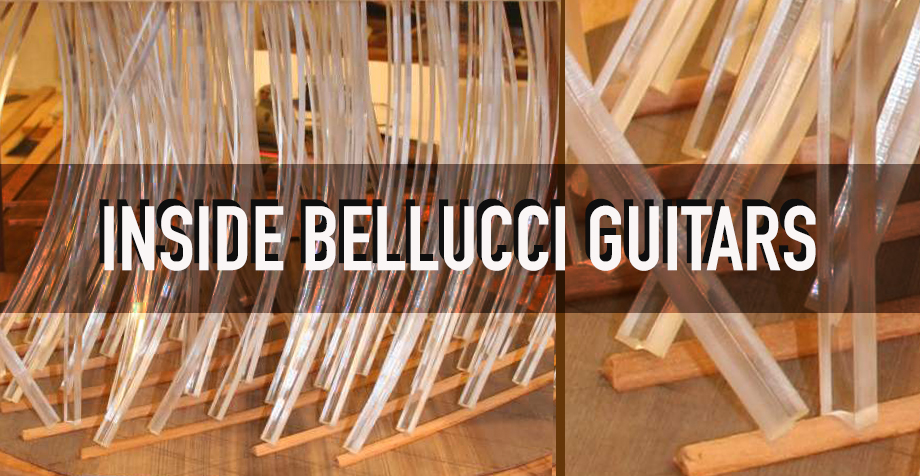
Bellucci Guitars Studio Asunción, Paraguay
Bellucci Guitars are built matching and voicing every single wood to optimize tone, projection and beauty. The internal strutting and the selection of woods I use in the construction is never the same. There are always variations typically due to tap tone resonance (AKA "Voicing"). As the guitar is built, the different parts are tapped and depending on how the wood resonates to tapping, different wood species and measures are used to enhance or diminish certain frequencies. Struts and the fan brace has to be planed and filed several times until desired resonances and frequencies, are achieved. Typically, F, F#, G & G# are the tones that indicate a great resonating top. At Bellucci Guitars, the internal strutting of a traditional Hauser (7 braces) is done using Spruce, Cedar, Mahogany and different types of Redwoods. In this article you can see a few Bellucci guitars. This is what they look like before the body is closed and just minutes after I sign and dedicate each one to our Lord with my characteristic S.D.G. Soli Deo Gloria -All the Glory to God- accompanied by the date.. 
Bellucci Guitars Construction
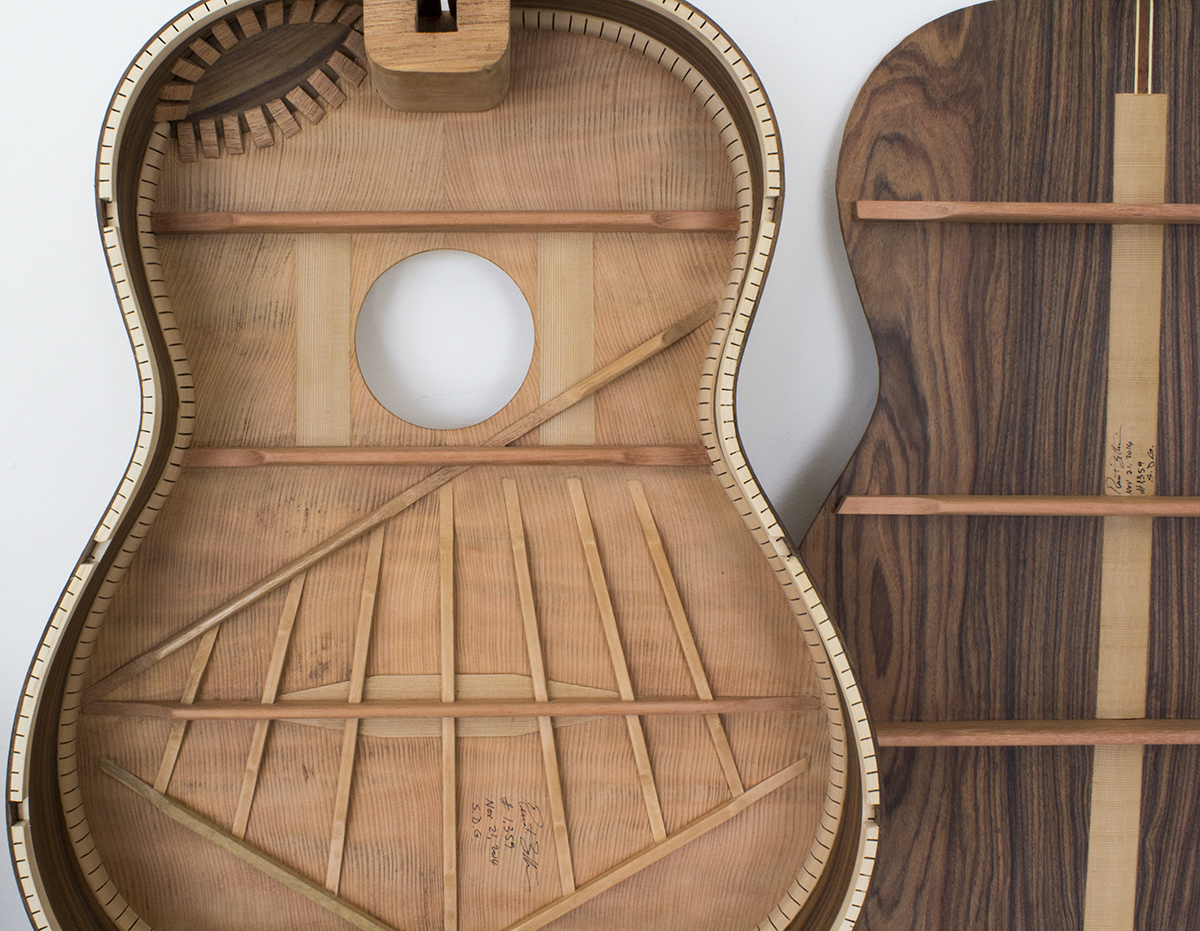
This is the interior of a Bellucci/Hauser braced Indented Cutaway # 1359. Pau Ferro B&S, Curly Sinker Redwood top beauty. The internal struts are made of Cedar, Mahogany and Redwood and the Kerf are made in Spruce. The classical guitar fan brace was developed by the Spanish Cabinet Maker Torres. It remained almost unchanged until the German builder Hermann Hauser perfected it in the 1930s. Today Builders Tinker the Basic Hauser Frame to take the system to work according to each builder unique taste for sound. The long transversal fan in the picture to the left that goes from the upper right to the lower left of the braces is my addition to the Hauser frame. It brings out the trebles in certain Back & Sides/Top Configurations. In the video below you can see how we glue the Hauser Fan Brace on a Bellucci Concert Guitar.
Bellucci Guitars Construction
Bellucci Guitars Construction
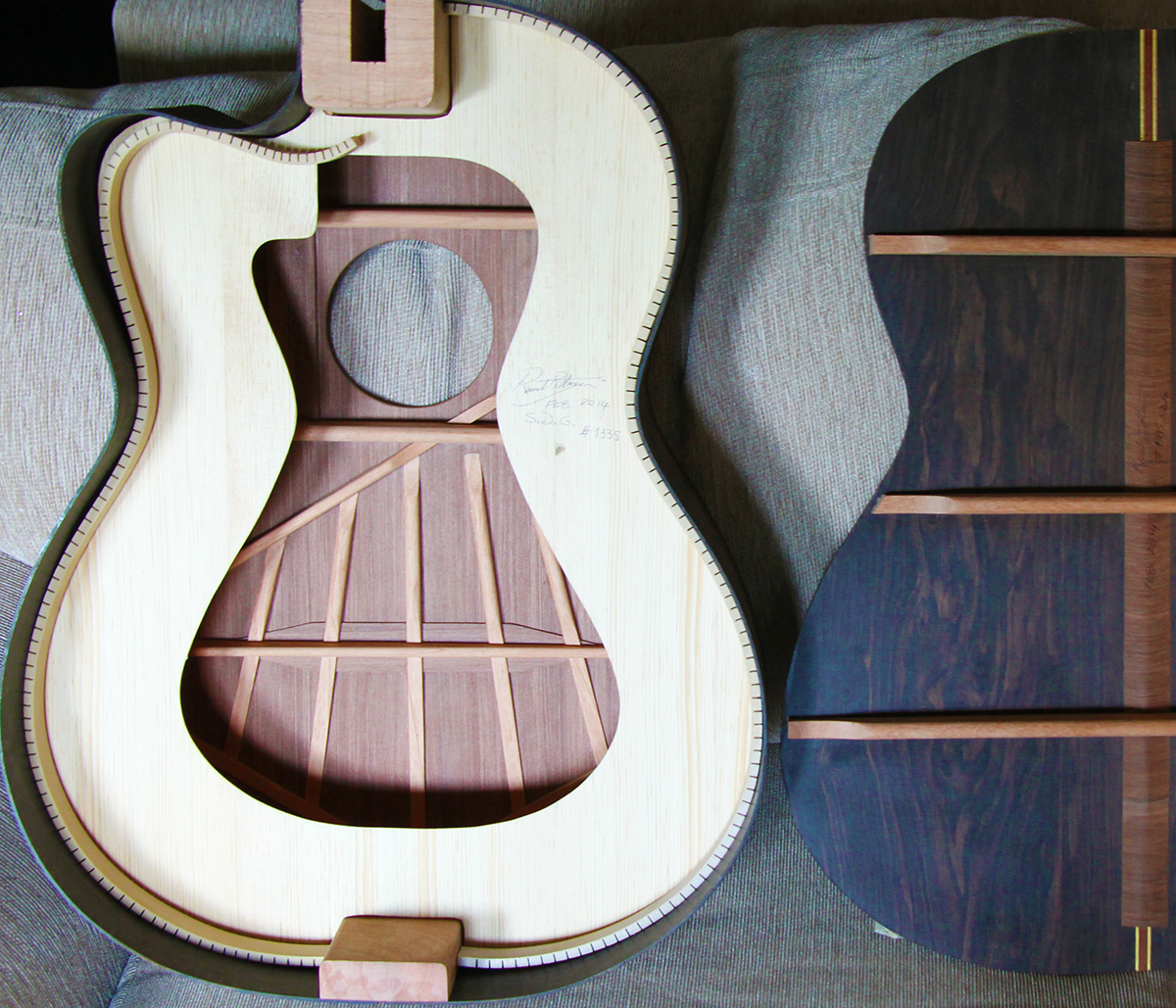
This is the interior of a spectacular African Blackwood Doubletop Cutaway #1335.
Bellucci Guitars Construction
Bellucci Guitars Construction
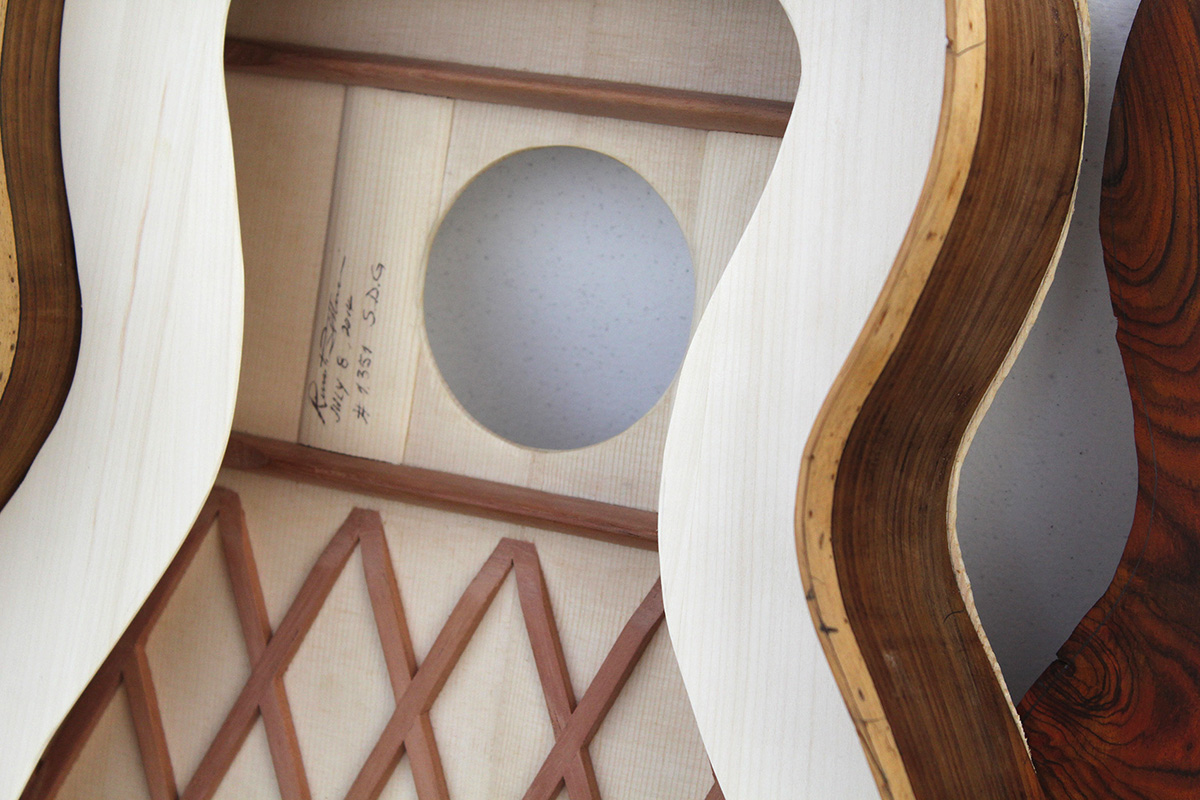
This is a wonderful Cocobolo B&S Spruce top, Lattice Braced Doubletop #1351. The interior strutting is made in Mahogany, Cedar, Redwood & Spruce.
Bellucci Guitars Construction
Bellucci Guitars Construction
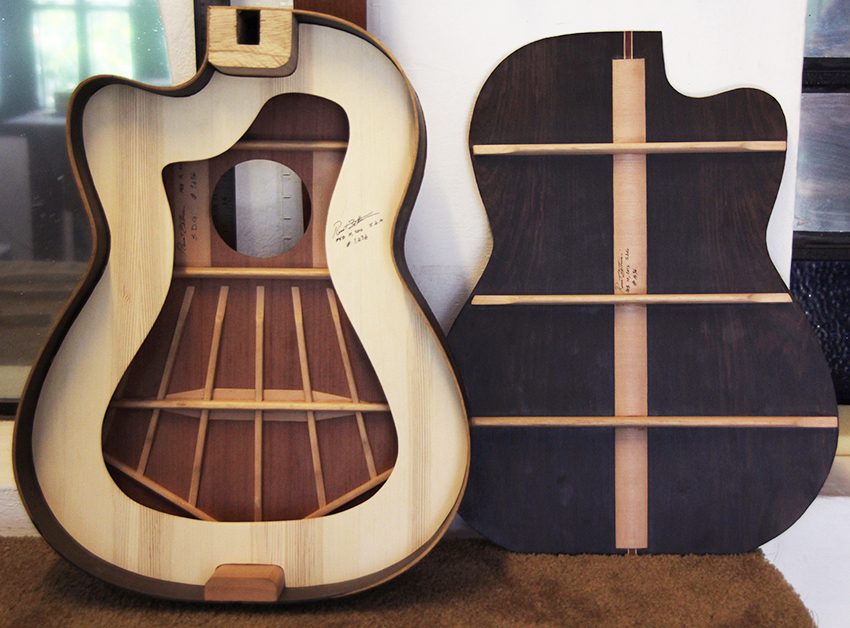
Again, here you can see one of the best tonewood combinations: African Blackwood B&S, Sinker Redwood top #1436.
Bellucci Guitars Construction
Bellucci Guitars Construction
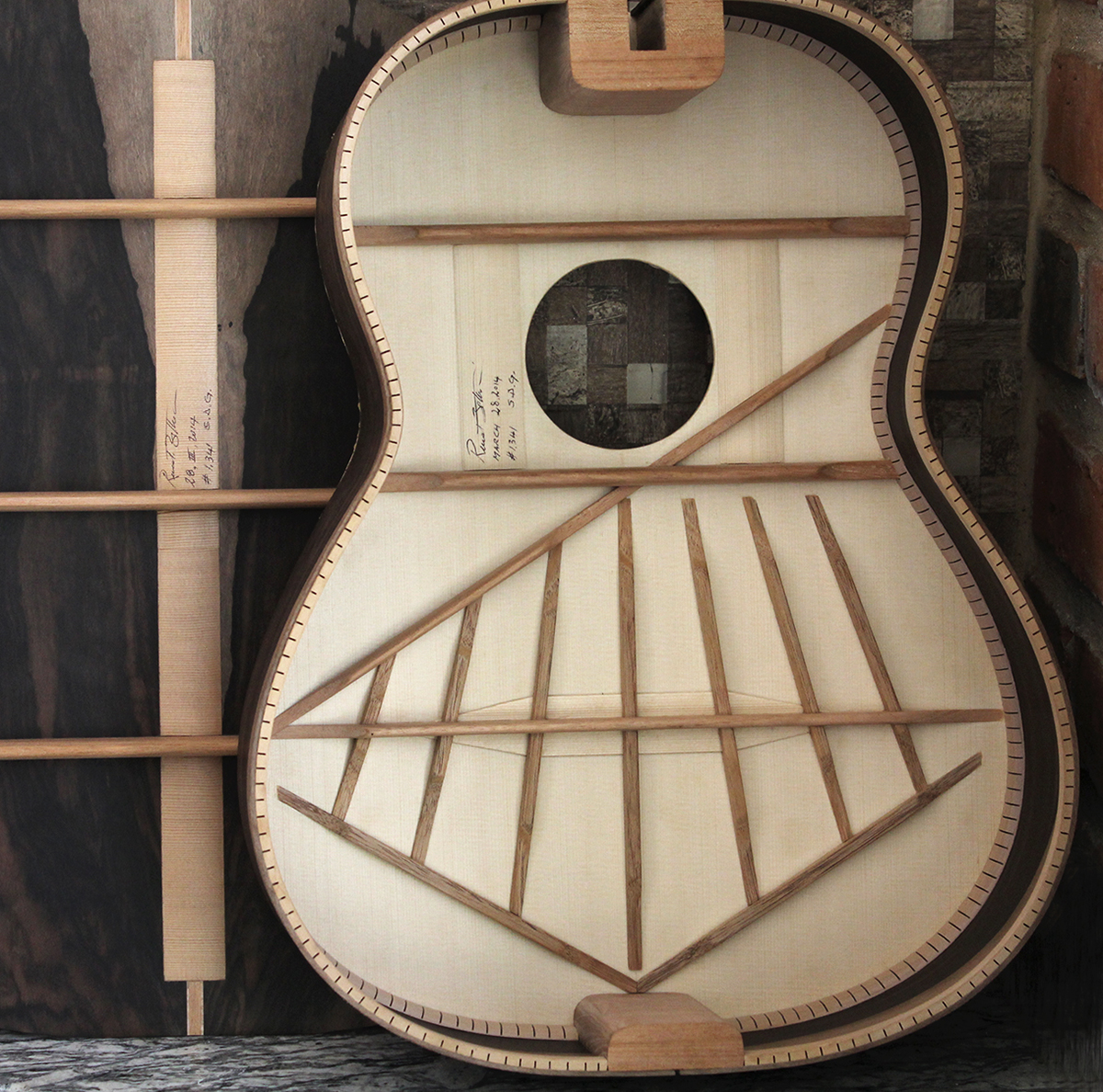
Here is one spectacular Macassar Ebony B&S Spruce top Hauser/Bellucci Concert Beauty #1341. All the interior strutting is done in Cedar, Mahogany, Redwood and Spruce.
Bellucci Guitars Construction
Bellucci Guitars Construction
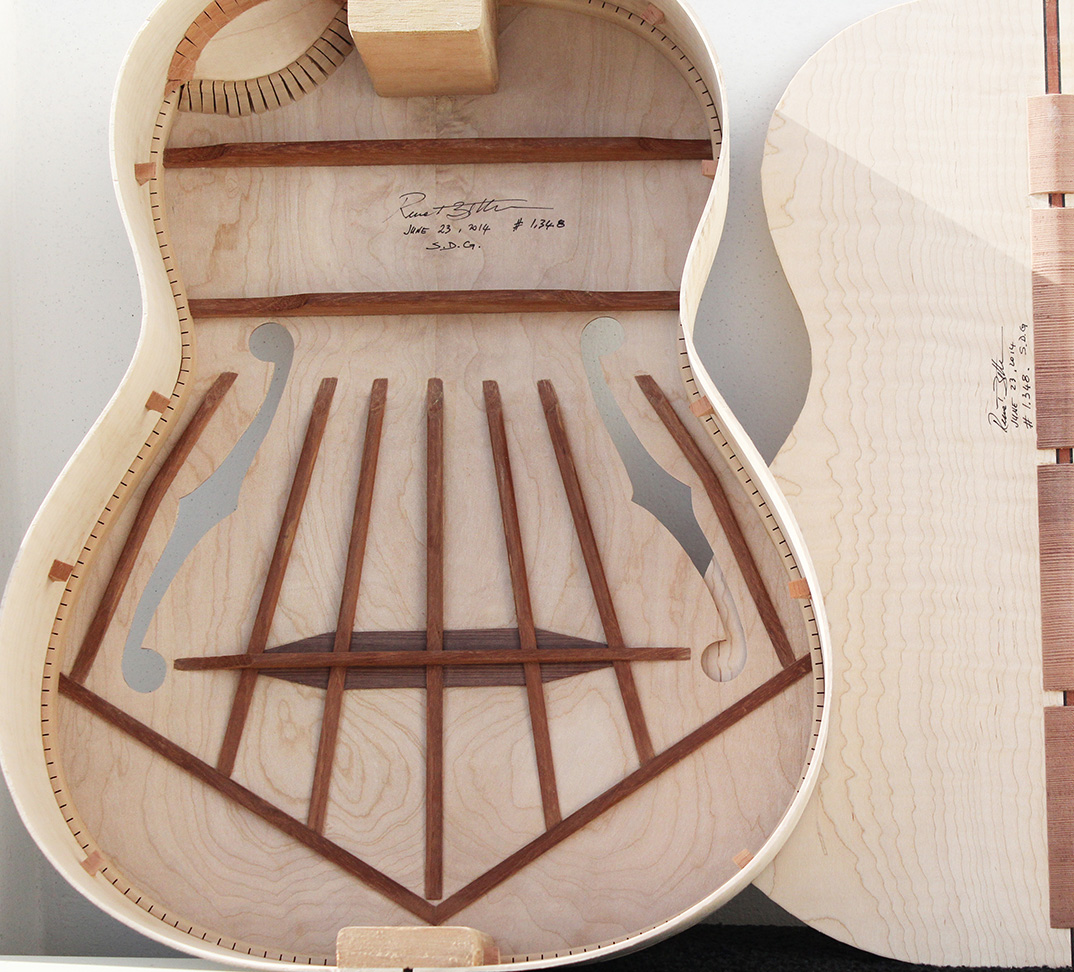
This is one amazing Bellucci Guitar I named after the legendary Cremonan Violin Maker Antonio Stradivari. She carries the serial # 1348.
Bellucci Guitars Construction
Stradivarius model guitar
Bellucci Guitars Construction
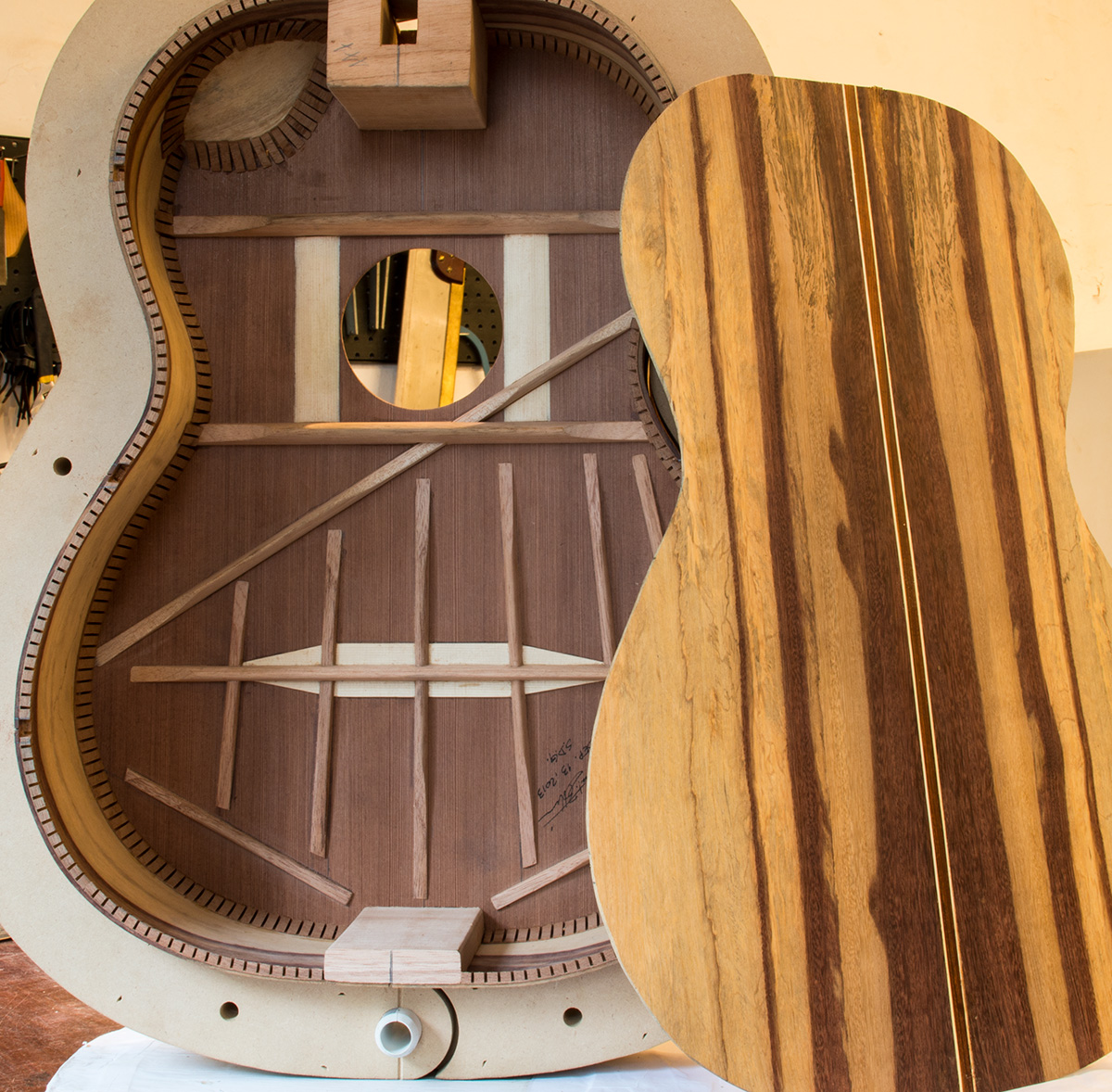
This Tamarind B&S Sinker Redwood top Bellucci is one of the best guitars I have ever built. The 2 woods work beautifully when matched and the Hauser/Bellucci Fan brace was the perfect choice to bring out her best sound. The internal Strutting was made in Cedar, Spruce, Sinker Redwood and Mahogany.
Bellucci Guitars Construction
Bellucci Tamarind guitar
Bellucci Guitars Construction
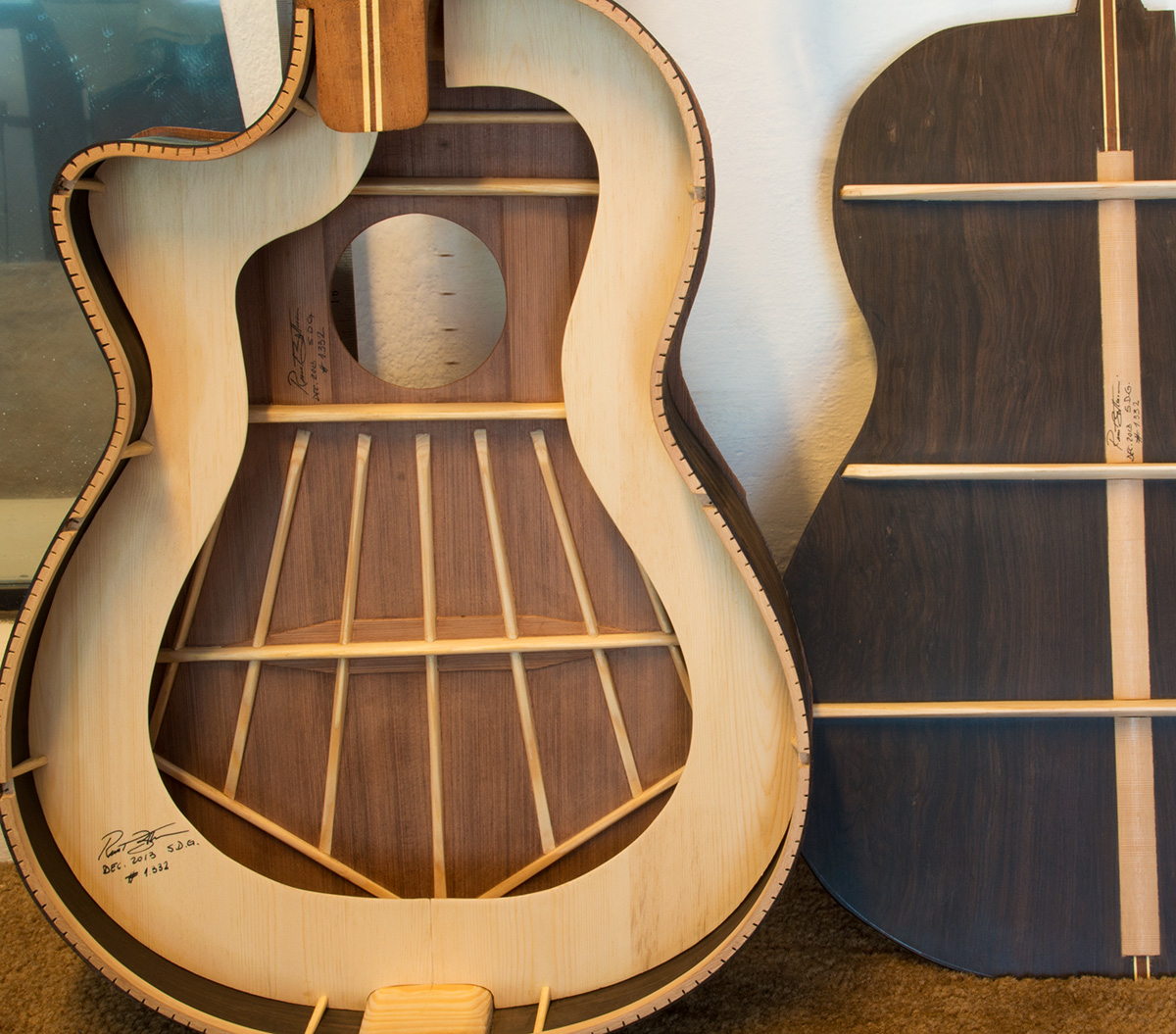
This is the interior of a spectacular African Blackwood Doubletop Cutaway #1332. Sinker Redwood was the choice for the main top and Spruce was the choice for the second top. The resulting sound was an amazing separation of voices and sustain to die for. Wolf notes were completely absent thanks to the second top. The strutting is made in Cedar, Mahogany, Spruce and Redwood.
Bellucci Guitars Construction
Bellucci Guitars Construction
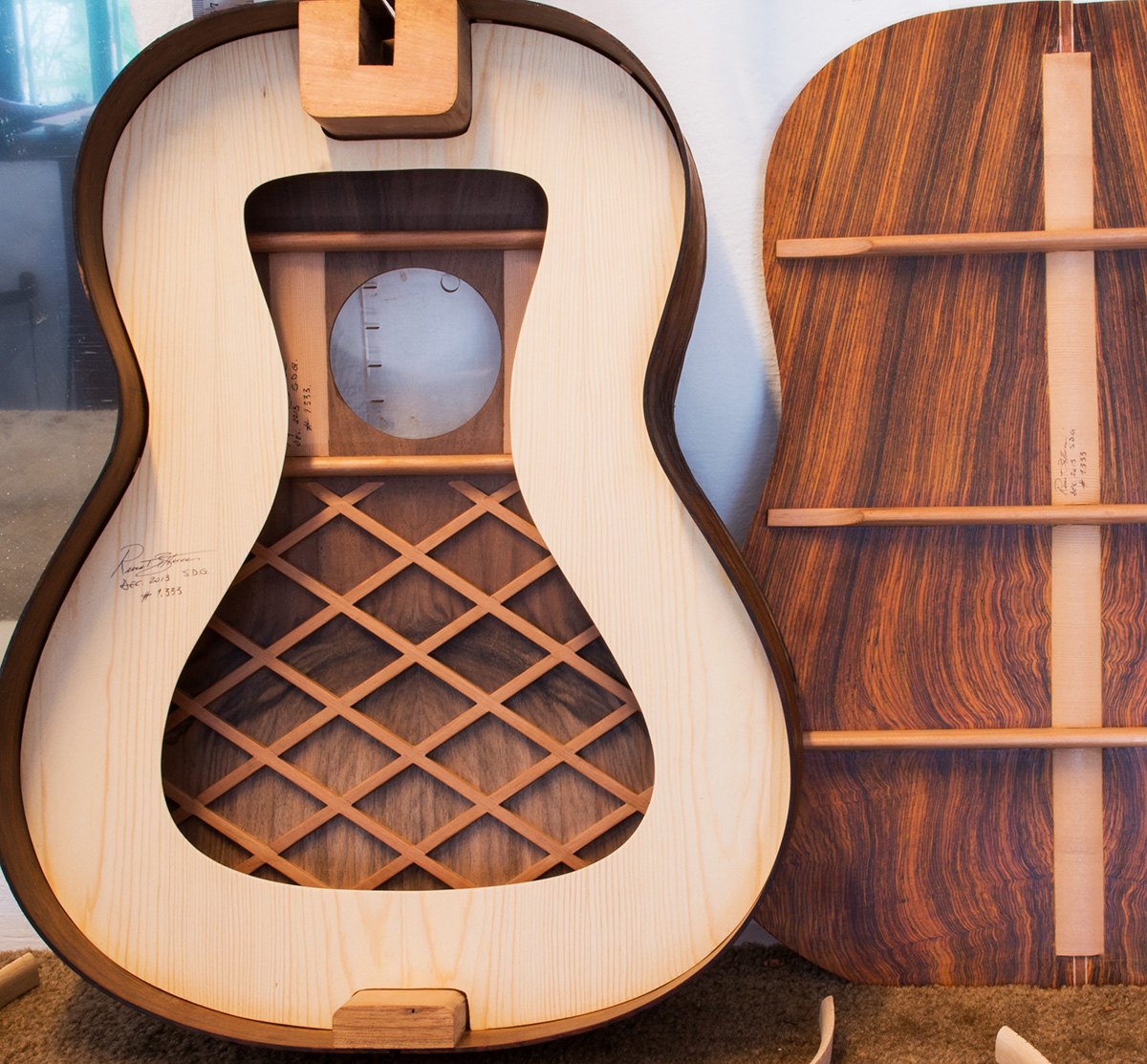
This is an amazing Cocobolo B&S Franquette Walnut Top Concert Guitar #1333. I made her a Lattice with The Doubletop and she looks and sounds simply fabulous. The Internal Strutting is made in Spruce, Cedar, African Mahogany and Sinker Redwood. Lattice is concept based in the A-frame of grand pianos. The idea behind the A frame is that all the energy generated by the vibration of the string is passed on to the top that allowing for as much air to be moved inside the guitar body. The A-Frame keeps the sides very steady and firm allowing for all the energy not to be dissipated uselessly. The top of the guitar on the other hand, is thinned well beyond the typical 2mm of Hauser construction techniques reaching as minute measures as .7-.8 in some areas. I do not use composite materials to avoid interference with the beauty of the sound typically produced by composites that detract the natural woody sound from the guitar. See this jewel HERE
Bellucci Guitars Construction
Lattice guitar construction on Bellucci guitars
Bellucci Guitars Construction
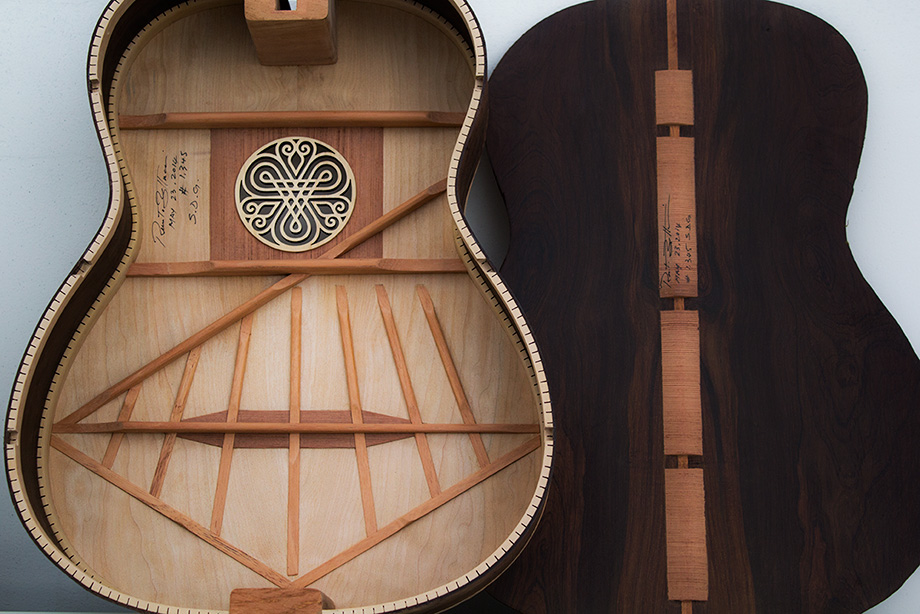
Bellucci Guitar #1345 was built using the Bellucci/Hauser Bracing System. This in turn was inspired by Rodriguez bracing that I found very genial in that it stiffened the trebles portion of the soundboard allowing for more penetrating trebles. I use this type of bracing time and time again especially when the buyer requests that the sound resemble the "Spanish Guitar Sound" as much s possible. I do not want to mislead you though because a great Spanish guitar sound can be achieved using all types of bracing and internal woods in the construction. Other builders throughout the world use different versions of this bracing system. See this Marvelous Brazilian Rosewood Guitar HERE
Bellucci Guitars Construction
Rodriguez style bracing in Bellucci guitars
Bellucci Guitars Construction
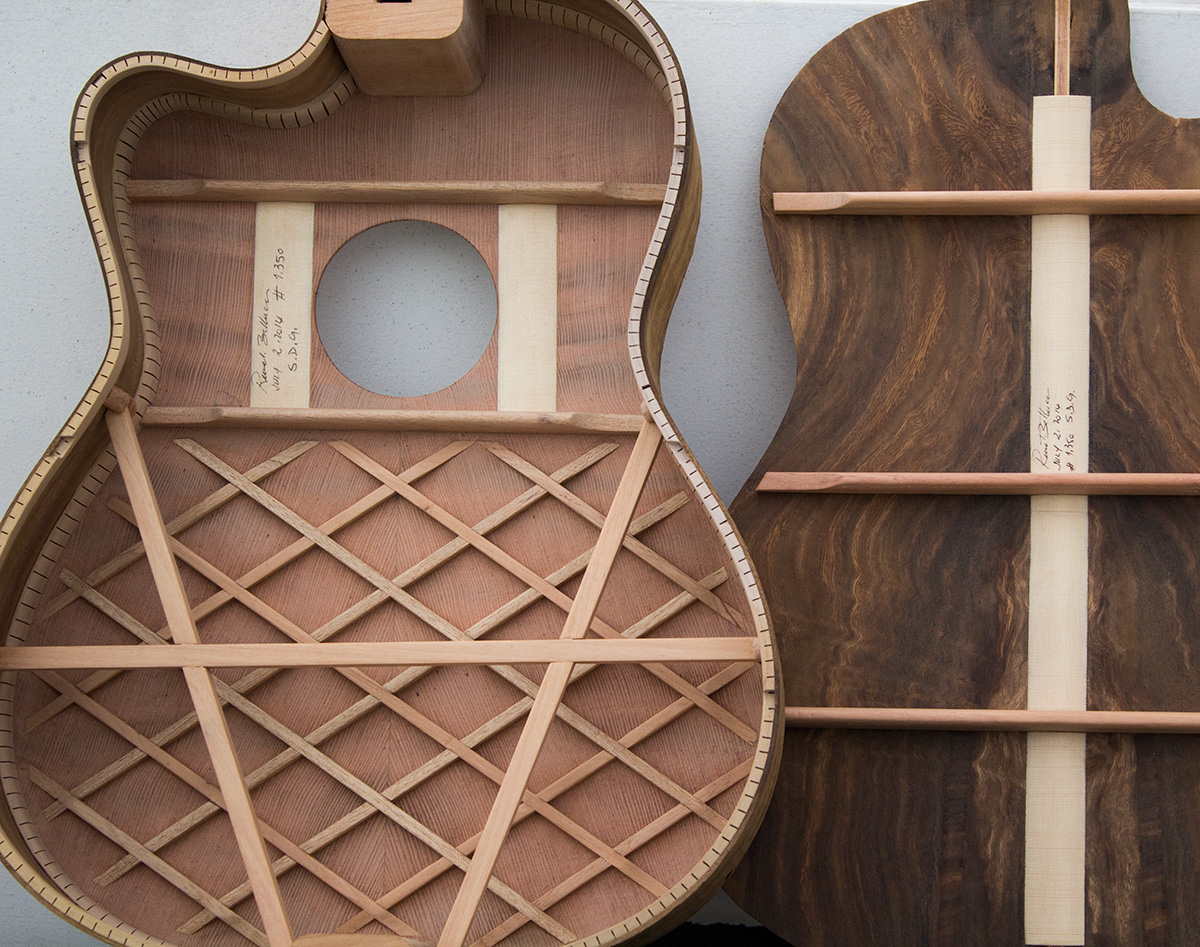
Bellucci Guitar #1350. In the picture here you can see the A-Frame very clearly. It is made of 3 pieces of wood that are typically made of Spruce that unite the sides of the guitar and the back heel of the instrument to ensure rigidity of the body frame. What this does is pass all the vibration of the bridge to the top and back not wasting any energy in exciting the sides that add very little or nothing at all to the overall guitar sound. A stiffer frame transmit energy faster and more efficiently. The main fan brace on this beauty is very evenly reduced (sanded). I do this in order to allow the top to the vibrate fully and generously. See what this Monkeypod B&S Guitar looks like when finished HERE
Bellucci Guitars Construction
Bellucci Guitars Construction
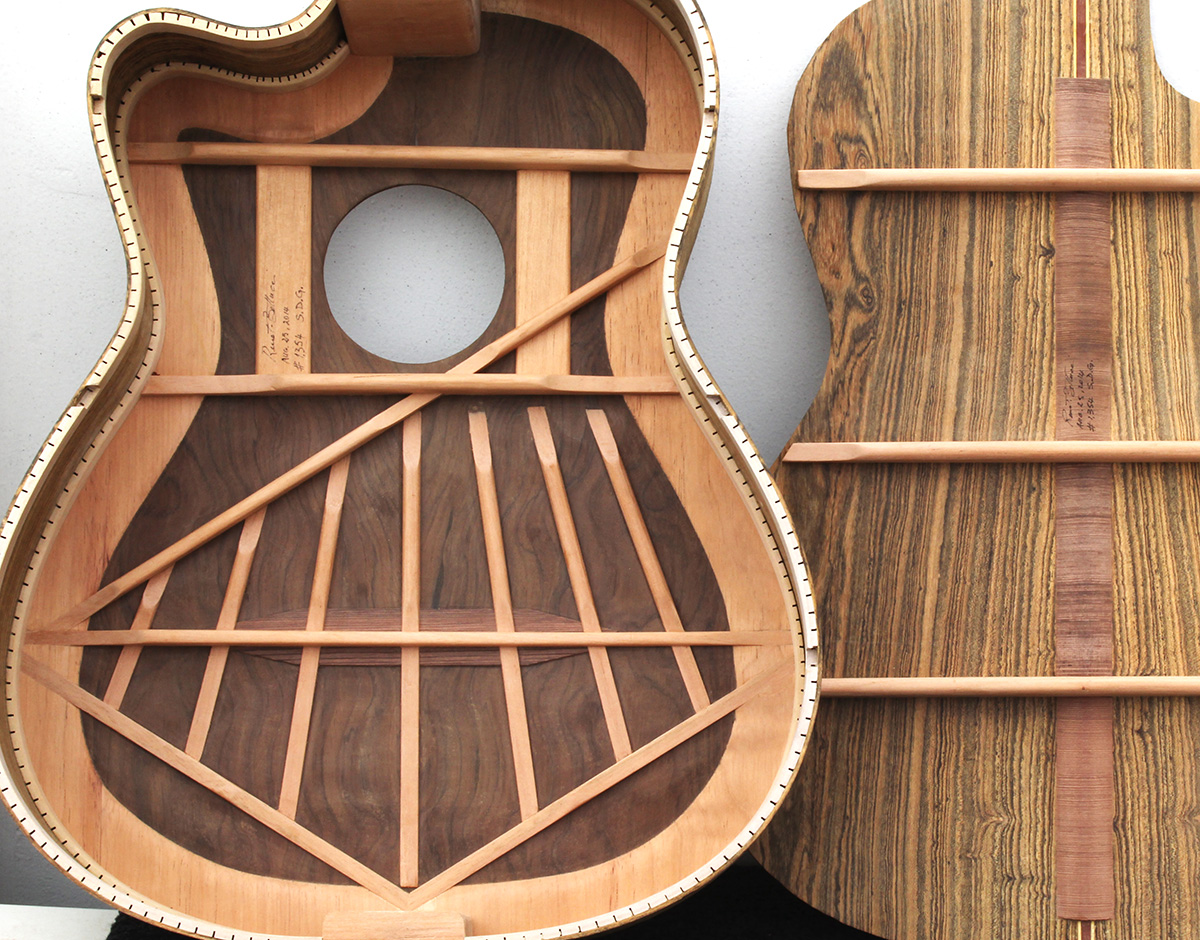
Bellucci Guitar #1354. This construction brings about what I would define as the sacred source of one of the most beautiful guitar sounds. This consists of a hybrid Hauser Rodriguez style bracing where a special Cedar wood doubletop is attached to the fringes of the main top: This increases roundness, projection, sustain, color & overall presence because the sound is focused towards the center part of the vibrating soundboard. Guitar sound is very elusive. A player can actually love 2 completely different types of guitar sounds. Players will find an instrument to better perform say in Baroque music that require more separation of voices over say Romantic guitar music that works with color and expression to a deeper level. See this Beauty finished HERE
Bellucci Guitars Construction
Bellucci Guitars Construction
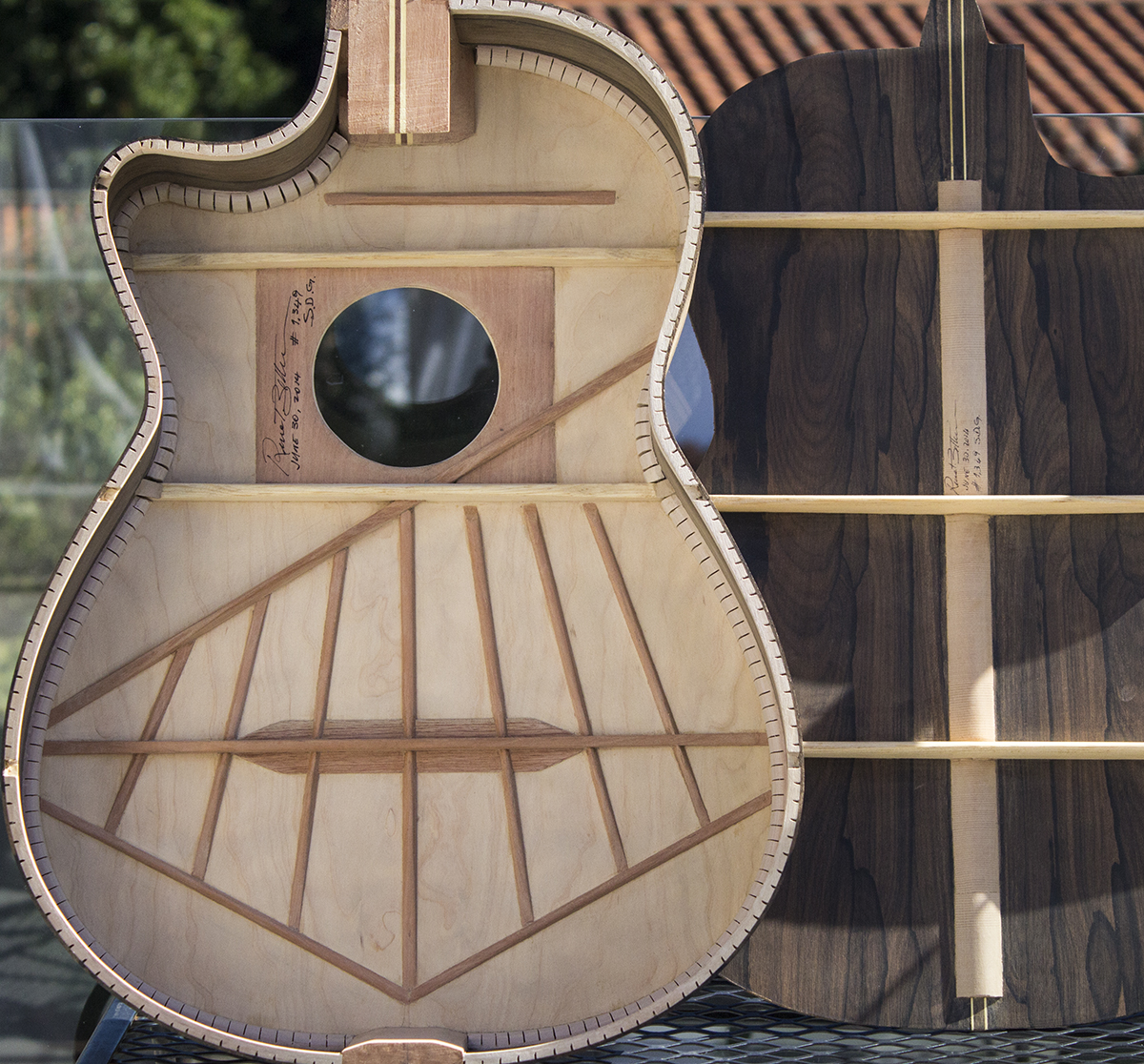
Bellucci Guitar #1349 is a wonderful Belize Zizicote B&S concert guitar I topped with Western Redcedar. Both woods work and complement each other marvelously. Therefore they allow for lots of experimenting with the wood used for the internal bracing and overall reinforcements of the different parts that hold the tension of the string and the production of massive vibration like the upper half of the top. Altering the length of this strut has a direct effect on the overall sound of the instrument and throughout the years I have experimented quite with this area of guitar construction quite extensively. The length of this strut will influence which strings will carry the main voice(s) of the guitar. I used Cedar to complement the Spruce top. Mahogany was used for the rosette reinforcement and the heels of the guitar are also made in Cedar. Kerfings are made in Mahogany. See what this Zizicote Guitar looks like when finished HERE
Bellucci Guitars Construction
Bellucci Guitars Construction
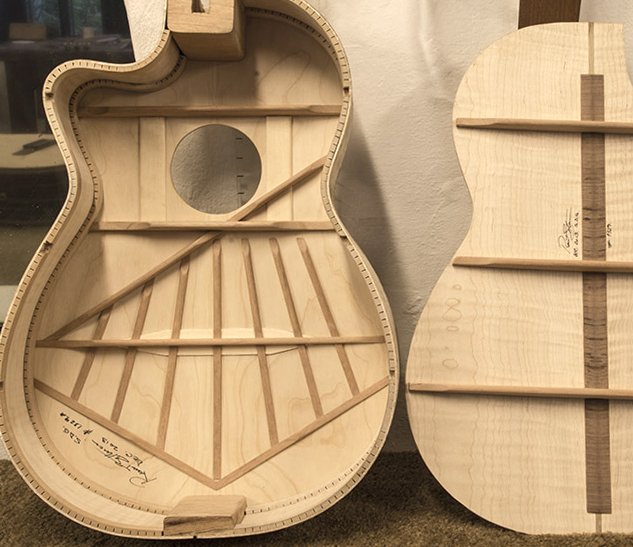
The Maple B&S Port Orford Cedar top beauty #1329 you can see here was built to be light and perform majestically in both Classical & Flamenco music. The struts are made in Cedar and Mahogany and the kerfs are made in Spruce. I personally love the challenge of Hybrid Instruments and I personally recommend them to most players coming to the classical guitar world from the Pop/Rock scene because typically, the instrument allows for a smoother transition and the type of repertoire where the instrument works is much wider. If you look closely the differences in construction are practically null. The main difference is that the action is maintained much lower to the point where fret buzzing happens which is an essential part of Flamenco sound. See and hear this gorgeous guitar when finished HERE
Bellucci Guitars Construction
Bellucci Guitars Construction
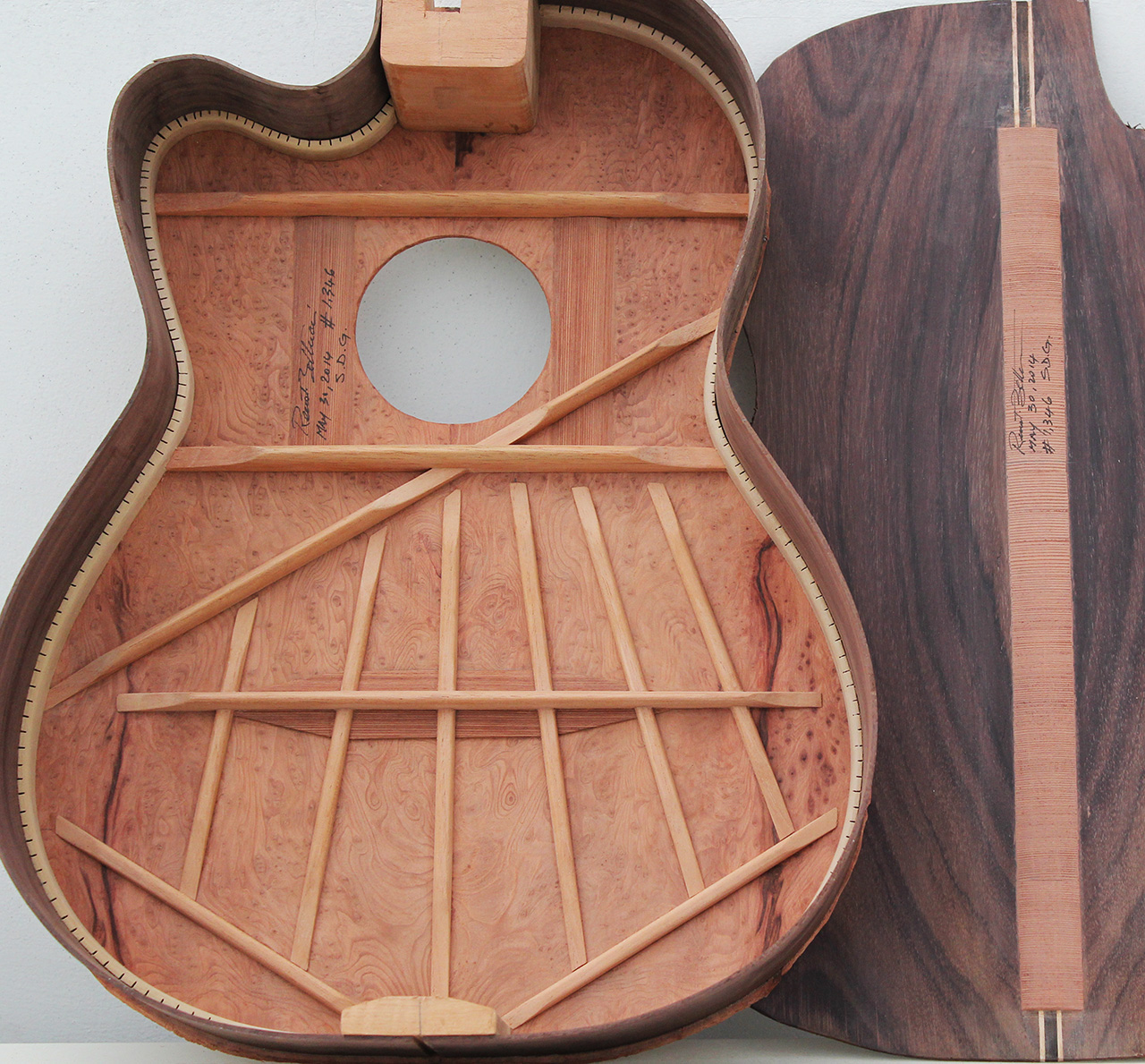
Bellucci Guitar #1346 displays the Bellucci/Hauser system. The figured dark top is compensated using a Spruce bracing and I indulged in making even the 2 heels and the kerf using the same wood. Spruce it the luthery wood that was first used in Europe by the great builders that found a great source of the species (Stradivarius and Amati are the most famous names). Things only started to move towards Cedar and Cypress when the Spaniards started building guitars because these species abound in the Iberian Peninsula. The Spanish sound was clearly imposed worldwide by the great Andres Segovia. He personified his homeland. He was a Spaniard and whatever he played was played by a Spanish Soul. He did it with Bach and made a much wider world audience fall in love with the German master. I used to criticize Segovia for doing this when I was younger but I have grown to the opposite extreme in the last few years. An interpreter "recreates" a piece of music which would otherwise be dead on a music sheet. He uses his work and soul and cultural influences to the service of music. Admire this Jewel HERE
Bellucci Guitars Construction
 Back to Top
Back to Top


